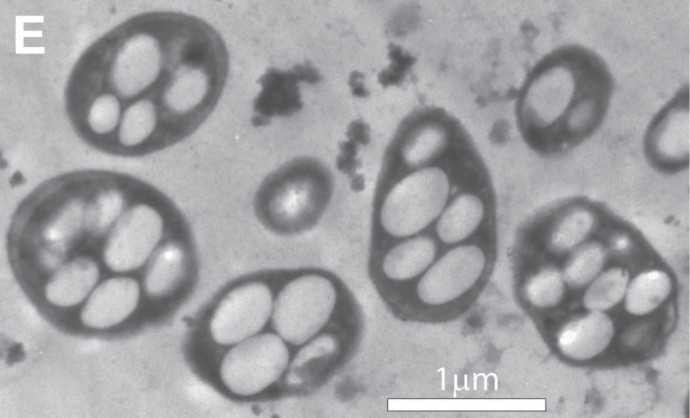Alien Life Found In California

A group of researchers has found alien life -- in California.
In California's Mono Lake, scientists found bacteria that can live with arsenic in its DNA, and even use it to metabolize and grow. The bacteria were discovered by Felisa Wolfe-Simon, a NASA Astrobiology Research Fellow and a member of the National Astrobiology Institute team at Arizona State University, who led the research team.
Her research, to be published in the journal Science, raises questions about the different forms life can take. Previously, it was taken as a given that any life forms -- either on Earth or elsewhere -- would probably have the same basic elements. That consensus is now called into question.
All life on Earth is based on DNA molecules, which have six basic elements: carbon, nitrogen, oxygen, hydrogen, sulfur and phosphorus. The bacteria found in Mono Lake can use arsenic in place of phosphorus.
Phosphorus is part of the phosphate backbone of DNA. It's also vitally important in the process of getting energy from sugars; adenine triphosphate is vital to transferring energy within cells. Phosphorus shows up in proteins and lipids which make up cell walls.
She found common bacteria -- called strain GFAJ-1 of the group Gammaproteobacteria, which includes diseases such as salmonella and black plague as well as some that breathe methane and live in extreme environments, such as hot springs. The bacteria seemed to thrive despite being exposed to the high concentrations of arsenic in the water of Mono Lake.
Wolfe-Simon decided to try exposing the microbes to even higher arsenic levels, while cutting the amount of phosphate available to them. As she fed the arsenic to the microbes, at a certain point, it was clear that there would not be enough phosphorus in the cells to sustain them if they were behaving normally.
We found not only did microbe deal with arsenide toxicity, it grew and thrived, she said at a press conference.
It is not clear, she said, exactly how much phosphorus was being substituted with arsenic -- whether it is in the entire cell or just part of it. Do we have a crystal structure yet? No, we're working on it. Do we have a genome yet? We're working on it, she said.
Phosphorus works as an element in life forms because it is stable in water. Arsenic is much less so, which is one reason Wolfe-Simon's findings are a surprise - ordinarily one wouldn't expect arsenic to last long in the lake.
Steven Benner, of the Foundation for Applied Molecular Evolution in Gainesville, Fla., said Wolfe's work provided a useful way of asking questions about what elements life can use to live. But he said he is skeptical that the microbe could completely substitute arsenic for phosphorus. He noted that while arsenic is chemically similar to phosphorus -- which is one reason it is toxic to people -- it does not bond as strongly to DNA molecules at room temperature.
What you are looking at is an exceptional claim, he said. That requires exceptional evidence to support it.
Benner said one possibility is that the microbe evolved some way to manage the weak connections between arsenic atoms and the rest of the DNA molecule. He also said that while arsenic creates less robust links with organic molecules on Earth, on very cold worlds, it would react more quickly and remain bound more strongly.
The new findings will force scientists to expand their methods of seeking life on other planets, said Mary Voytek, director of the astrobiology program at NASA. Our goal is to think as broadly as possible, she said. We would not want to look for specifically DNA with arsenic in its backbone. We want to be broad. We would hate to go somewhere, look for life and not see it.
Besides being a possible form for life on other worlds, the discovery that microbes can live on arsenic has practical possibilities on Earth as well.
James Elser, professor of ecology at Arizona State University, said during the press conference that such bacteria could be used to clean up toxic waste spills. If some microbes can replace phosphorus with arsenic, they could be used to recover phosphorus, which is currently mined from phosphate rocks for fertilizer.
An arsenic-based microbe could also offer a better way to make biofuels. Current methods require fertilizer for the plants. What if someone is clever enough to develop bioenergy creature that doesn't need phosphorus?' he said.If this holds up could have a whole bioenergy based on arsenate organisms.
Though many in the blogosphere were expecting NASA to announce that it had found extraterrestrial life, Voytek said this discovery should not disappoint. This is a phenomenal finding, she said. This is life that appears to be using another fundamental component.
© Copyright IBTimes 2024. All rights reserved.





















